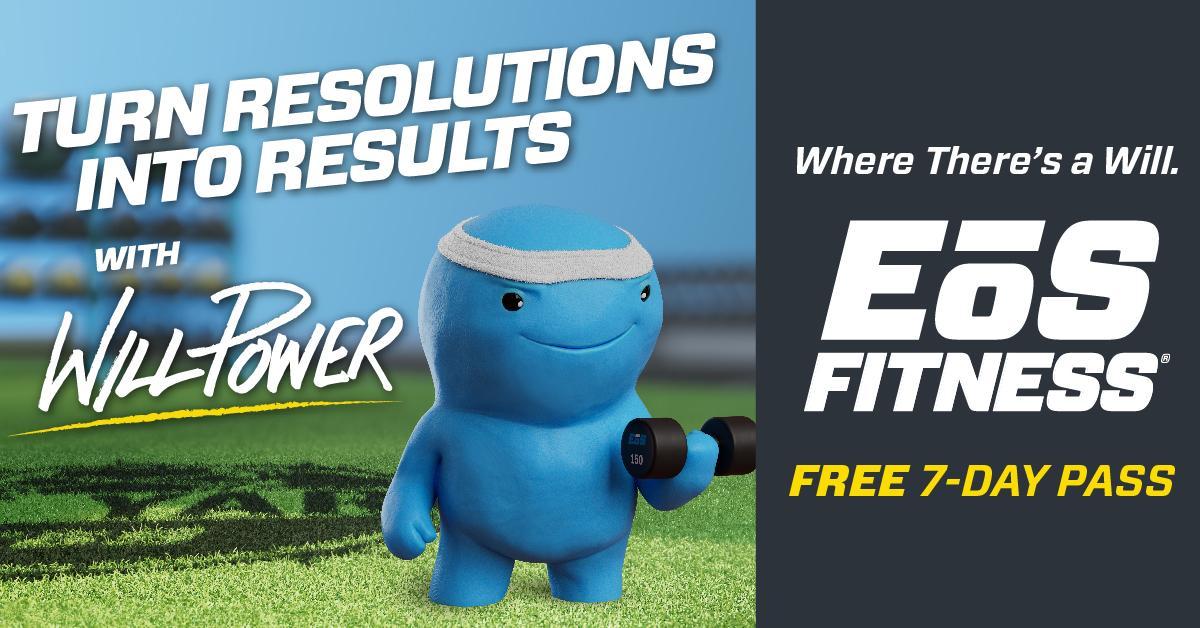WORKOUTS THAT ENGAGE FAST-TWITCH MUSCLES
Fitness Tips
Jun 22, 2024 • 10min read
Have you ever noticed the contrast between the physiques of marathon runners and field stars? These striking differences are not just a matter of training regimens – they have roots in the very makeup of their muscles. You’ve probably heard of slow-twitch muscles and fast-twitch muscles, but what exactly are they and how can they affect the way you move and the way you look? Let’s explore fast- vs. slow-twitch muscle fibers and then review ways you can cultivate your big and explosive fast-twitch muscles.
UNDERSTANDING FAST- VS. SLOW-TWITCH MUSCLE FIBERS
If you want to get nitpicky, the body is actually made up of muscles that fall into a variety of sub-categories. However, to simplify, it’s easier to divide muscles into two main groups: slow-twitch muscles and fast-twitch muscles.
INTRODUCING SLOW-TWITCH MUSCLES
Slow-twitch muscles possess their own mitochondria, which lets them use oxygen to create energy. This ability to power themselves up (using a chemical called adenosine triphosphate, or ATP) means that slow-twitch muscles are all about endurance. They can keep going and going.
Endurance athletes, like long-distance runners, swimmers and cyclists rely on their slow-twitch muscles to help them make it from the start line all the way to the finish. You may also notice that these endurance athletes tend to be trim rather than heavily muscled. Slow-twitch muscles are not big or bulky.
Fast-twitch muscle fibers are designed for short bursts of power and speed, making them ideal for high-intensity activities like sprinting, Olympic lifts and plyometric exercises. They fatigue quickly but generate more force. Slow-twitch muscle fibers, on the other hand, are more efficient at using oxygen to generate energy for continuous, endurance activities like long-distance running. They contract more slowly but can sustain activity for longer periods. Genetic factors significantly influence an individual’s ratio of fast- to slow-twitch fibers, impacting their athletic capabilities and training focus. Understanding how to train both types can help optimize performance and muscle development.
INTRODUCING FAST-TWITCH MUSCLES
Slow-twitch muscles have a low activation threshold. That means when you go out for a walk or jog, the first muscles your body recruits to get your legs moving and arms swinging are your slow-twitch muscles. It’s only when those muscles grow weary or they don’t have the power to generate a big, explosive movement that fast-twitch muscles enter the picture.
Fast-twitch muscles are all about force and power. If you want to jump, sprint, lift a heavy barbell, or tackle that linebacker, you’ll need some help from your fast-twitch muscles. These muscles are also primarily responsible for your body’s muscular definition and overall strength. As Active.com reports, “…if you’re looking to increase muscle mass and improve strength, using fast-twitch fibers is the only way to do it.”
Endurance work is great for improving your cardio, but sculpting comes down to fast-twitch training. That means focusing on movements that incorporate power and explosiveness. Remember, your body wants to use slow-twitch muscles if it can, so you need to add weight and intensity to your workouts to give your fast-twitch muscles a good workout.
THE GENETIC FACTOR TO FAST-TWITCH VS. SLOW-TWITCH MUSCLE FIBERS
Research indicates that your genes play a role in the amount of fast- vs slow-twitch muscle fibers you possess in your body (you can’t turn slow-twitch muscle fibers into fast-twitch muscle fibers or vice versa). Some of us are born with more slow-twitch muscle fibers while others enjoy a higher ratio of fast-twitch muscle fibers. That may explain why some people can jog five miles without breaking a sweat while others look like they have rockets strapped to their feet when they sprint down a straightaway.
The genetic factor plays a significant role in determining the ratio of fast-twitch to slow-twitch muscle fibers in your body, which influences how effectively you can train fast-twitch muscles. Understanding this genetic predisposition can help tailor your workouts, whether you’re focusing on heavy weightlifting or plyometric exercises, to optimize your strength and performance in fast-twitch muscle workouts.
Don’t let your genetic predisposition get you down. Unless you plan to be a professional football player or a cross-country skier, it doesn’t really matter whether your body favors fast-twitch or slow-twitch muscle fibers. You still have both kinds, and you can still train your fast-twitch muscles. If you fall on the slow-twitch muscle side, you may need to work a little harder for your results and you may never be as swole as Arnold Schwarzenegger was in his day, but you’ll still see impressive results if you train the right way.
HOW TO TRAIN FAST-TWITCH MUSCLES
The name of the game is power, speed and explosiveness when it comes to training your fast-twitch muscles. To engage your fast-twitch muscles, you’ll need to go big and hard in your workouts. Just remember to always warm up your muscles before putting them through big movements. If you plan to throw around big weights, make sure you feel comfortable with the movements and ideally have a workout buddy to spot you.
Here are some fast-twitch exercises you can do to engage those specific muscle fibers.
LIFT HEAVY WEIGHTS
Lifting light or moderate weights will not be enough to wake up your fast-twitch muscles. According to ACE Fitness, “Resistance training with heavy weights stimulates muscle motor units to activate more muscle fibers. The heavier the weight, the greater the number of fast-twitch fibers will be recruited.” Build up in weight and then, when it gets heavy, focus on short sets of only a few reps.
Muscle & Fitness suggests using 55-82.5% of your 1RM on your lifts and to “perform each rep as explosively as possible through the full range of motion.” (Your “1RM” or one rep max is the heaviest weight you can do for that movement). Keep in mind that your fast-twitch muscles deplete quickly. Make sure you add 60 to 90 seconds of rest between sets.
It is crucially important that you focus on maintaining good form when lifting heavy weight, or you risk injury. If you’re just starting your fitness journey, consider using resistance machines at your local gym. When you feel more comfortable with the movements, transition to dumbbells and barbells.
Incorporating heavy weightlifting into your fitness routine is essential for effectively training fast-twitch muscles. These exercises are crucial for fast-twitch muscle workouts, as lifting heavy weights rapidly engages and strengthens these muscle fibers, enhancing power and explosive strength. Understanding how to train fast-twitch muscles with heavy weights can lead to significant improvements in muscle growth and overall athletic performance.
SPRINTS
You don’t necessarily need weights to work your fast-twitch muscles. You can activate your fast-twitch muscle fibers using only body movements as long as those movements are explosive. One of the easiest fast-twitch exercises to do is sprinting. Head over to the local high school or college track or find a flat stretch of sidewalk near your home (if your joints are healthy). Then put yourself through sprints.
This is all about power, so keep your sprints short and intense. You should try to maintain at least 80 percent of your fastest speed throughout the sprint.
On a track, consider sprinting the straight aways and walking the curves for four laps with a rest between each lap if necessary. If you’re not on a track, you can always use a stopwatch (or stopwatch app) to sprint for 20 seconds followed by 40 seconds of walking. Repeat that 10 times and you’ll get an excellent workout.
PLYOMETRIC (JUMP TRAINING)
Another way to invite your fast-twitch muscles to the party is to perform a plyometric workout. Plyometrics is all about jumping. As long as you perform these jumps explosively (no slow and easy jumping jacks, unless that’s your warm-up), you’ll recruit your fast-twitch muscle fibers. Plyometrics also helps you engage a wide range of muscles, as well as improve your coordination and body awareness. Just make sure your joints are in good shape. Plyometrics can put a strain on ankles, knees and hips.
Incorporating plyometric (jump training) exercises into your fitness regimen is a powerful way to engage fast-twitch muscles. These explosive movements are ideal for fast-twitch muscle workouts, enhancing power and agility. Plyometric exercises, combined with strength training, can effectively train both fast- and slow-twitch muscle fibers, leading to improved athletic performance. Understanding how to train fast-twitch muscles with plyometric drills can significantly boost your speed and jumping ability.
A simple plyometric workout could include three sets of five box jumps, five broad jumps and single-leg cone jumps (five on each leg). You may also want to see if your gym offers a plyometrics class.
OLYMPIC LIFTS
Combining power, explosiveness and heavy weight, Olympic lifting is the fast-twitch muscle trifecta. It’s also an advanced form of fitness that requires guidance and practice, especially as you learn the movements. Olympic lifting is comprised of two primary movements: the clean and jerk, and the snatch. Both movements require you to lift a heavy barbell overhead. The snatch movement entails getting the bar from the ground to overhead in a single movement. The clean and jerk includes moving the bar to the chest (front rack) and then jerking it overhead.
Incorporating Olympic lifts into your routine is an excellent way to train fast-twitch muscles. These explosive movements are ideal for fast-twitch muscle workouts and can significantly enhance your performance in exercises for fast-twitch muscles. By targeting both fast- and slow-twitch muscle fibers, Olympic lifts offer a balanced approach to strength training. Understanding how to train fast-twitch muscles with these lifts can lead to improved power, speed and overall athletic ability.
Again, these movements are complex. You should not attempt them without instruction and guidance from an experienced Personal Trainer.
FAST-TWITCH MUSCLES FAQS
What are fast-twitch muscles?
Known as Type II muscles, fast-twitch muscle fibers are a category of skeletal muscle fibers in your body. Muscles consist of fibers, and the brain stimulates those fibers through electric impulses to make them contract. Type II muscles are further broken down into two sub-categories: Type IIA and Type IIB or Type IIX. Type IIA can recover more quickly than Type IIB; but Type IIB provides the fastest, most powerful muscle contractions compared to the other types. However, they’re also the least efficient since they tire the fastest.
Why do athletes need fast-twitch muscles?
Fast-twitch muscle fibers contract quickly, tire rapidly and help you perform fast, high-intensity activities for short periods of time. For athletes, fast-twitch muscles help with sprinting, box jumping, weight lifting, strength-training and activities that require substantial strength or power.
What are the benefits of fast-twitch muscles?
Fast-twitch muscles are about strength and power, and they also happen to store a high amount of carbohydrates. You’ll draw 3g of water into the muscle for every gram of carbohydrate you store, helping your muscles to obtain a fuller, denser look. Fast-twitch muscles are designed to help you during short, intense activities including:
- Sprinting
- Agility training
- HIIT
- Powerlifting
- Strength training
- Jumping
- And high-intensity cycling
Can training my fast-twitch muscles help me build mass?
When it comes to building muscle mass, the only way to do it is to engage your fast-twitch muscles as they have an impact on your body’s muscular definition. You want to focus on movements that incorporate explosiveness and power to build more muscle mass.
What are some fast-twitch muscle exercises for weight loss?
To lose weight and engage your fast-twitch muscle fibers, try interval or sprint training.
How do you train your fast-twitch muscles?
When you want to train your fast-twitch muscles, make sure to focus on high-intensity, low-duration exercises, such as box jumps, jump squats, stair climbing and kettlebell exercises. Keep reading below for an in-depth look at some fast-twitch exercises.
WORKING THOSE SLOW-TWITCH MUSCLES AND FAST-TWITCH MUSCLES
Incorporating fast-twitch muscle workouts into your fitness routine can significantly enhance your athletic performance and strength. By focusing on exercises for fast-twitch muscles, you can build explosive power and improve overall muscle definition. Understanding the difference between fast- and slow-twitch muscle fibers is crucial for effective training. If you’re wondering how to train fast-twitch muscles, our comprehensive guide offers the best high-intensity workouts and training tips. Join us at EōS Fitness to maximize your fitness potential and achieve your performance goals.
Ready to take your fitness game to the next level? At EōS, we’re wildly passionate about helping you unleash the power of both your slow-twitch and fast-twitch muscles. Our EōS Yard® offers a top-notch turf area for functional training, and our Group Fitness Classes deliver the motivating energy you’re looking for. Not a Member yet? Don’t sweat it! Grab a Free 7-Day Gym Pass or find an EōS Fitness near you.







